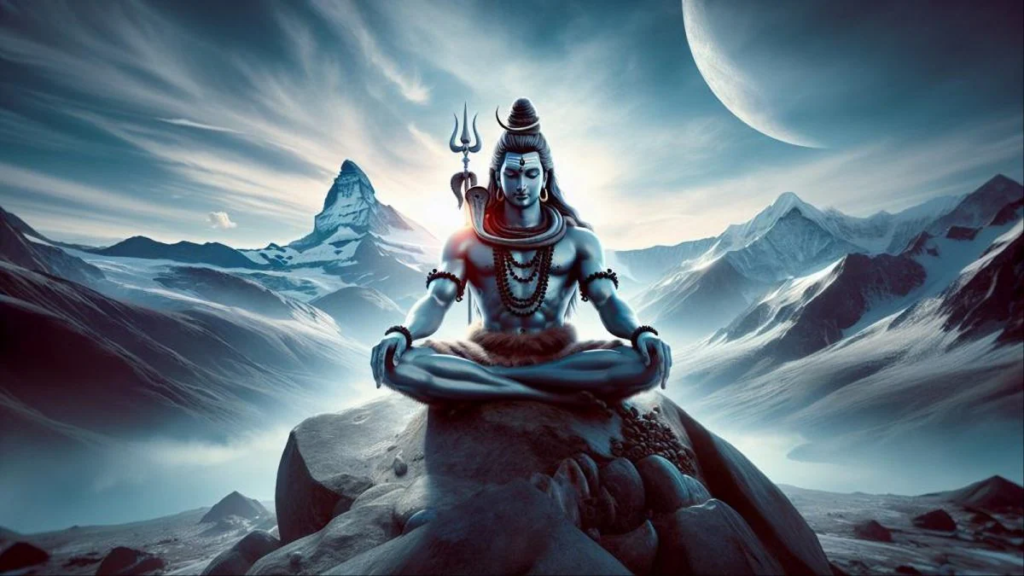
Table of Contents
- Introduction: The Spiritual Night of Shiva
- Parvati’s Penance: A Divine Love Story
- The Marriage of Shiva and Parvati
- Samudra Manthan and the Poison That Shook the Universe
- The Symbolism of Maha Shivaratri
- Maha Shivaratri Rituals and Their Significance
- The Story of the Hunter and the Shiva Linga
- Conclusion: Why Maha Shivaratri Is More Than Just a Festival
1. Introduction: The Spiritual Night of Shiva
Maha Shivaratri isn’t just a date on the calendar. It’s a mystical night soaked in devotion, chants, and stories that echo through centuries. Celebrated with great energy across India, especially by Shaivites (devotees of Lord Shiva), this sacred festival marks the union of divine energies — Lord Shiva and Goddess Parvati.
But why this night? What makes it so important in Hindu mythology? Let’s dive into the legends behind it.
2. Parvati’s Penance: A Divine Love Story
Goddess Parvati, a reincarnation of Sati, was determined to win the heart of Shiva, the detached ascetic meditating in the Himalayas. While Shiva had renounced the world, Parvati embraced it — yet her devotion to Shiva was unshakable.
She performed intense tapasya (austerity) in the harsh mountains, living on leaves and air. Impressed by her unwavering devotion, even the sages and gods began to admire her determination.
3. The Marriage of Shiva and Parvati
Moved by Parvati’s love and sacrifice, Shiva finally appeared before her. Their celestial wedding took place on the 14th night of the lunar month of Phalguna — the night we now celebrate as Maha Shivaratri.
It wasn’t just a marriage of two deities. Symbolically, it was the merging of Prakriti (nature) and Purusha (consciousness), of Shakti and Shiva — the balance of energies that sustain the universe.
4. Samudra Manthan and the Poison That Shook the Universe
Another popular legend connects Maha Shivaratri with the Samudra Manthan — the cosmic churning of the ocean. During this event, a deadly poison named Halahala emerged. It was powerful enough to destroy all creation.
To save the world, Shiva drank the poison and held it in his throat. Parvati, fearful for his life, gently held his neck to stop the poison from spreading. His throat turned blue, earning him the name Neelkanth.
Devotees believe Maha Shivaratri commemorates this act of sacrifice and protection.
5. The Symbolism of Maha Shivaratri
More than just stories, Maha Shivaratri holds deep symbolic meaning:
- It marks victory over darkness and ignorance.
- It signifies self-restraint, discipline, and the power of meditation.
- It reminds us that love and devotion can awaken even the most detached soul.
6. Maha Shivaratri Rituals and Their Significance
On this night, devotees observe:
- Fasting and abstaining from worldly pleasures
- Night-long vigil (Jaagaran) filled with bhajans and chants
- Abhishekam of Shiva Linga with milk, honey, water, and bel leaves
- Recitation of Shiva mantras like “Om Namah Shivaya”
It is believed that prayers offered on this night are directly heard by Lord Shiva.
7. The Story of the Hunter and the Shiva Linga
A lesser-known tale tells of a hunter who unknowingly worshipped Lord Shiva. Lost in the forest, he climbed a tree to escape wild animals. To stay awake through the night, he plucked leaves and dropped them — unaware there was a Shiva Linga beneath.
Unintentionally, he performed a night-long worship and was blessed by Shiva. This tale highlights how even innocent devotion can bring divine grace on Maha Shivaratri.
8. Conclusion: Why Maha Shivaratri Is More Than Just a Festival
Whether you see it as the night of divine union, a reminder of cosmic balance, or simply a moment for spiritual reflection — Maha Shivaratri invites everyone to pause, reflect, and connect with something greater than themselves.

